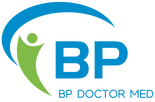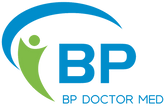How to Fall Asleep in 10, 60, or 120 Seconds: Science-Backed Methods
Struggling with insomnia or restless nights? Chronic sleep deprivation can elevate blood pressure and strain cardiovascular health. This guide reveals military-developed techniques and clinically-proven methods to achieve rapid sleep onset, while exploring how modern smartwatches can monitor your sleep quality and nighttime blood pressure fluctuations.
The Military Method: Fall Asleep in 10 Seconds
Originally developed for US Navy pilots, this 120-second routine culminates in a 10-second knockout phase. Research shows it works even with caffeine consumption and background noise when practiced for 6 weeks.
Step-by-Step Technique:
- Facial Relaxation: Release all facial muscles including tongue and jaw (smartwatches with SpO2 sensors detect this physical relaxation)
- Shoulder Drop: Lower shoulders away from ears to release tension
- Chest Release: Exhale fully to relax chest and torso
- Leg Unwinding: Sequentially relax thighs, calves and feet
-
Mental Clearance: For 10 seconds, either:
- Visualize a serene scene (like lying in a canoe under stars)
- Repeat "don't think" to block mental chatter
Smartwatch Integration:
Devices like BP Doctor Med and Apple Watch can track:
- Heart rate decline during relaxation phases
- Blood oxygen level improvements
- Muscle tension reduction through movement sensors
60-Second Sleep Solutions
4-7-8 Breathing Technique
Developed by Dr. Andrew Weil, this method combines meditation and physiological sigh response:
- Place tongue tip behind upper front teeth
- Exhale completely through mouth (whoosh sound)
- Close mouth, inhale silently through nose for 4 seconds
- Hold breath for 7 seconds
- Exhale forcefully through mouth for 8 seconds
- Repeat 4 cycles (advanced practitioners fall asleep by cycle 2)
Smartwatch Tip: Use blood pressure watches with breathing guides to maintain perfect rhythm.
Progressive Muscle Relaxation (PMR)
Clinical studies show PMR reduces insomnia by 75% when practiced regularly:
| Body Part | Action | Duration |
|---|---|---|
| Forehead | Raise eyebrows high | 5 seconds tension, 10s release |
| Cheeks | Force full smile | 5 seconds tension, 10s release |
| Eyes | Squint tightly | 5 seconds tension, 10s release |
| Neck | Tilt head back gently | 5 seconds tension, 10s release |
Continue downward through body until asleep. Smartwatches with EMG sensors can detect when muscle groups fully relax.
120-Second Advanced Techniques
Paradoxical Intention
A cognitive behavioral therapy technique proven in Oxford studies:
- Actively try to keep your eyes open in dark room
- Repeat "I must stay awake" mentally
- This reduces performance anxiety about sleeping
- Most users fall asleep within 2 minutes
Sensory Visualization
The Oxford "Imagery Distraction" study showed 58% faster sleep onset when visualizing:
- Waterfall with detailed sound/texture imagery
- Forest walk with pine scent visualization
- Beach scene with wave rhythm focus
Wearable Tip: Smartwatches with ambient sound playback can enhance this technique.

Acupressure Points for Sleep
Three clinically-studied pressure points:
- Spirit Gate: Wrist hollow (pinky side) - circular massage for 3 minutes
- Inner Frontier Gate: Three finger-widths below wrist - thumb pressure between tendons
- Wind Pool: Base of skull - deep circular massage while breathing deeply
Optimizing Your Sleep Environment
Enhance these techniques with proper sleep hygiene monitored by smart devices:
Pre-Sleep Routine
- 15-minute gentle yoga (track with smartwatch)
- Warm shower 90 minutes before bed
- Stop eating 3 hours before sleep
- Wear compression socks if cold
Bedroom Setup
- Blackout curtains
- White noise machine (or smartwatch apps)
- Room temperature 60-67°F (15-19°C)
- Aromatherapy diffuser with lavender
Blood Pressure Note: Studies show proper sleep environment reduces nighttime BP spikes by 8-14mmHg.
Tracking Progress with Wearable Tech
Modern smartwatches enhance these techniques by:
- Monitoring heart rate variability during relaxation
- Tracking blood oxygen levels throughout night
- Recording sleep stages to measure technique effectiveness
- Alerting to abnormal nighttime blood pressure fluctuations
Combine these science-backed sleep methods with consistent tracking using devices like Withings ScanWatch or Samsung Galaxy Watch for comprehensive sleep and cardiovascular health management.








